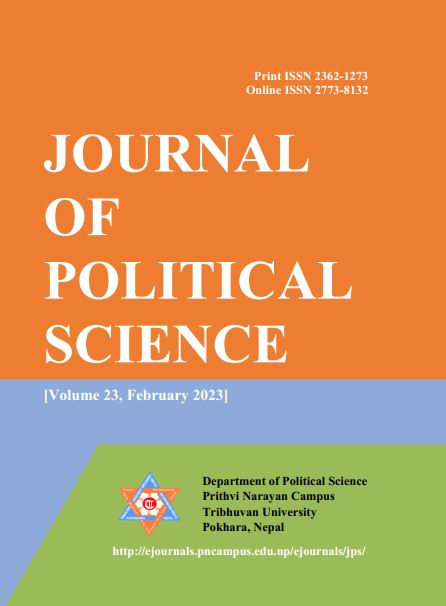Measuring Governance in Nepal
DOI:
https://doi.org/10.3126/jps.v23i1.52281Keywords:
Measuring governance, corruption, survey, indicator, NepalAbstract
The study aimed to explore the approaches, tools, and indicators around the world to measure governance and how Nepal is taking advantage of them. Measuring governance is a complex phenomenon because it depends on the context in which it is being discussed. Based on the secondary information, the study discussed the introduction of governance, its importance, prevailing approaches, and indicators of measuring governance globally and their uses in Nepal. The article acknowledges that periodic assessment of governance indicators urges countries to continuously strive for better service delivery for further improvements on these governance indicators. Nevertheless, the most widely used governance indicators by developing countries such as Nepal is developed mostly by international organizations and multi-laterals and with their strategic interest limiting their universality. Thus, such indicators may require critical evaluation and customization by developing countries before adoption. The research concludes that there is no single best universally accepted method and indicator for measuring governance. Also, Nepal needs to conduct prudent assessment and customization of the indicators and approaches for measuring governance of all three tiers of government namely local, provincial, and federal governments.
Downloads
Downloads
Published
How to Cite
Issue
Section
License
Copyright (c) 2023 Department of Political Science, Prithvi Narayan Campus

This work is licensed under a Creative Commons Attribution-ShareAlike 4.0 International License.




